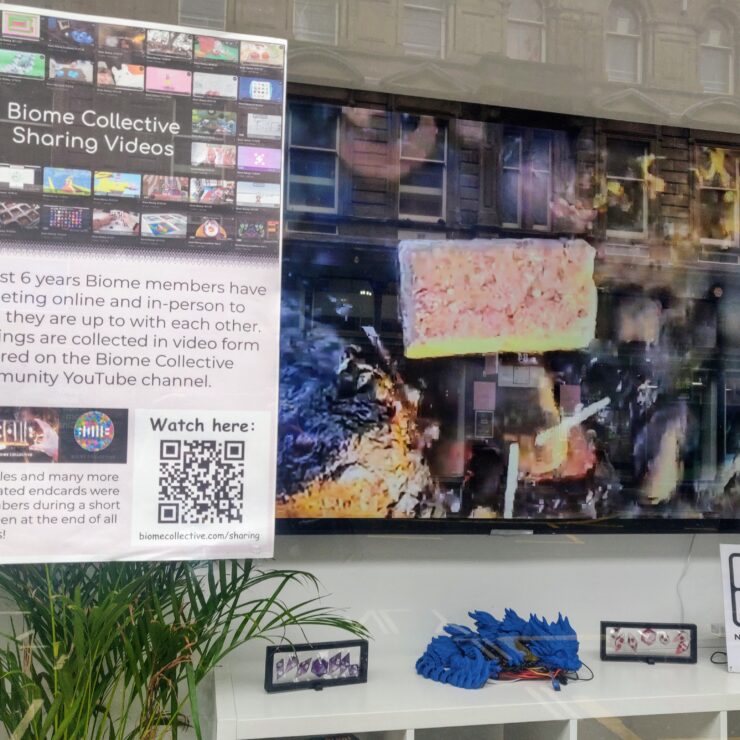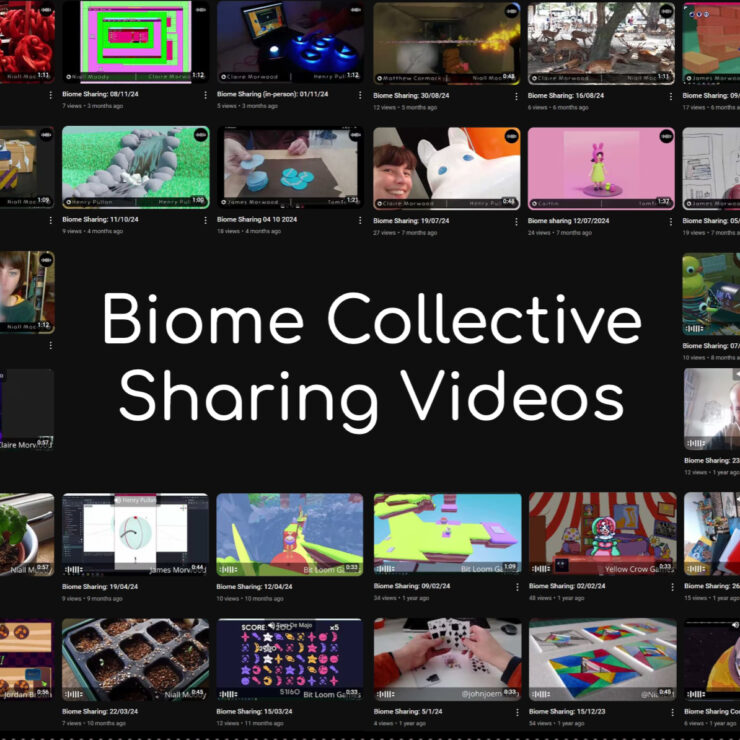Cielito Saravia talks about holistic digital security
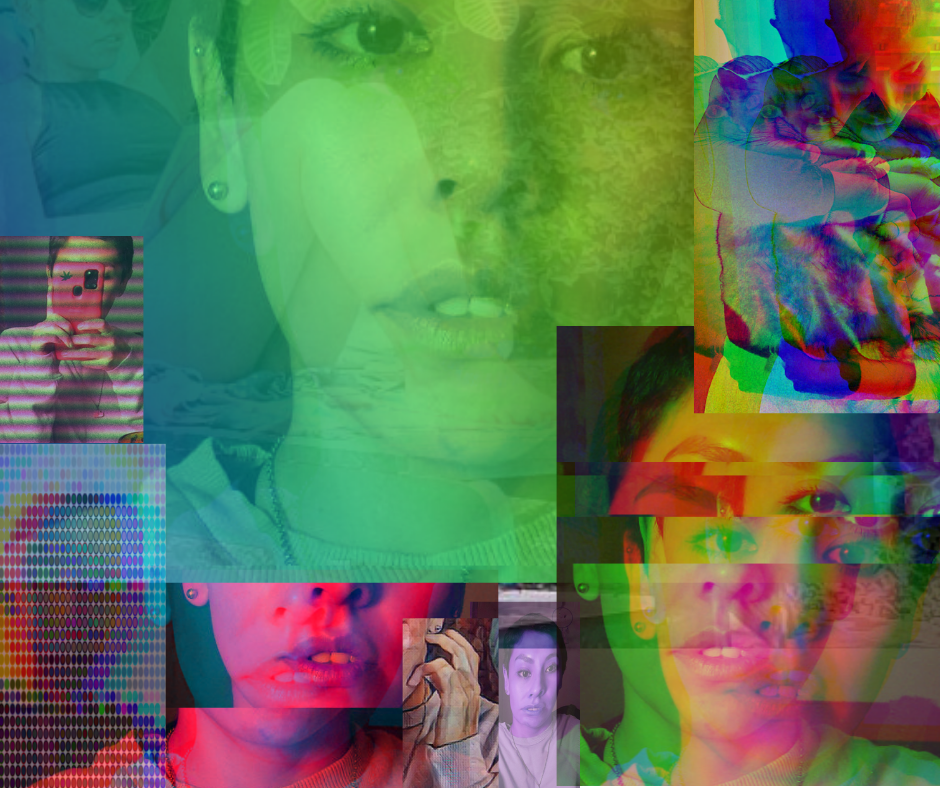
NEoN is supporting this year’s 16 days of Activism campaign by presenting work and creative practices that use digital tools or comment on today’s complex digital relationships. In particular, we are interested in work that highlights how our digital entanglement, digital coding and the online spaces we create can reflect just about every social topic; such as freedom, compliance, censorship, gender, and everyday hostilities.
We have invited six activists to contribute to this campaign by writing an article about their stories, their jobs or their own campaigns.
////////////////////////////
Content warning – This article contains mentions of Gender Based Violence, Cyberbullying, insults, dissemination of intimate images without consent, extortion, identity theft, discrimination, harassment, sexual abuse and everyday sexism.
Holistic digital security: Strategies against cyber sexism
Responses to gender-based violence online (GBVO) in Bolivia, lessons learned and recommendations for Scotland
Cyberbullying, insults, denigration, dissemination of intimate images without consent, extortion, identity theft, cracking, etc., are part of the universe of aggression faced especially by women, adolescents and non-conforming sexual identities in Bolivia. Gender-based violence is also expressed in the digital environment. According to data from the S.O.S. Digital Center, the most frequent cases of gender violence online they responded to in 2021 were: harassment: 23%, personal data abuse: 23% and sexual abuse using ICT’s: 20%.
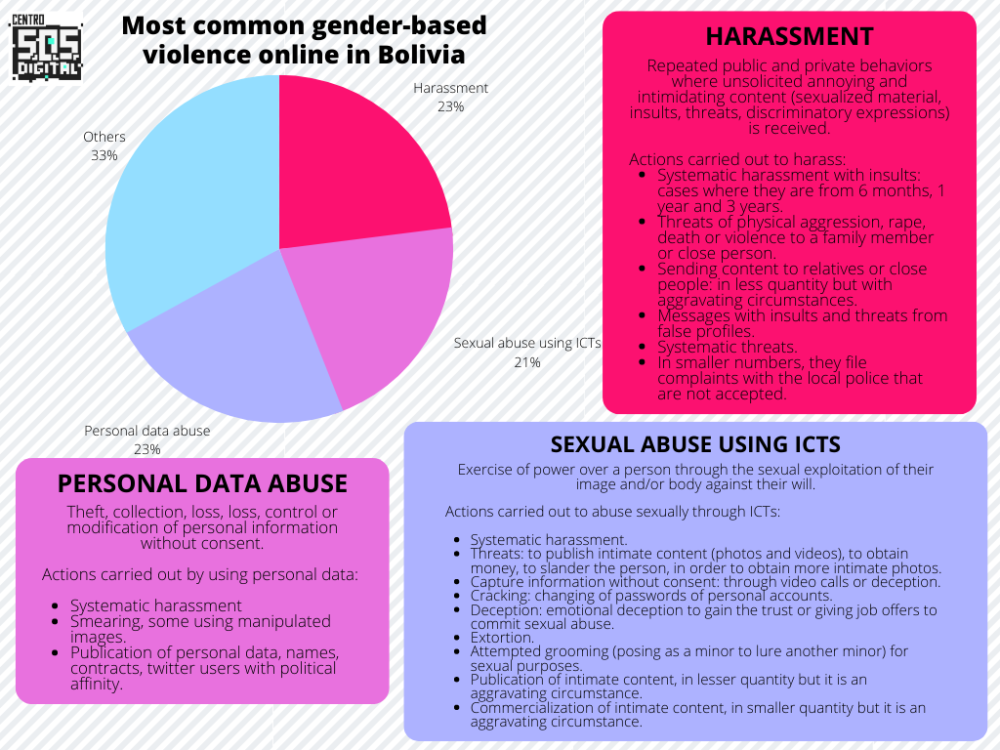
Image 1: Most common gender-based violence online in Bolivia.
Source: Report of 2021: https://sosdigital.internetbolivia.org/reporte-sos/
Strategies, particularly in Bolivia, to perpetuate this violence are displayed to damage reputation, undermine skills, and expose personal data and activities for everyone to pass judgment over the content regarding private life (intimate pictures, in parties, with friends or working) of women and the non-conforming genders who occupy the online public sphere. They are carried out by organized groups that use Telegram to protect their identity, facilitate dissemination of images and videos of their victims, recruit more machitrolls (sexist trolls) and attack in an orderly and systematic fashion.
These actions stress our agency in digital spaces and denigrate healthy practices of sexual activities such as safe sexting -once recommended by the State entities during the Covid outbreak- that were taken in a moment of intimacy and consent but later published without the consent of parties involved.
The response
Our strategies are mainly comprised of reactive responses, in other words, reporting content to the platforms where the violence is being carried out (Meta -WhatsApp, Facebook, Instagram- Google, TikTok, etc.). The reporting system is one of our few options to interact with big tech companies that reply with automated responses, a process that becomes quite frustrating.
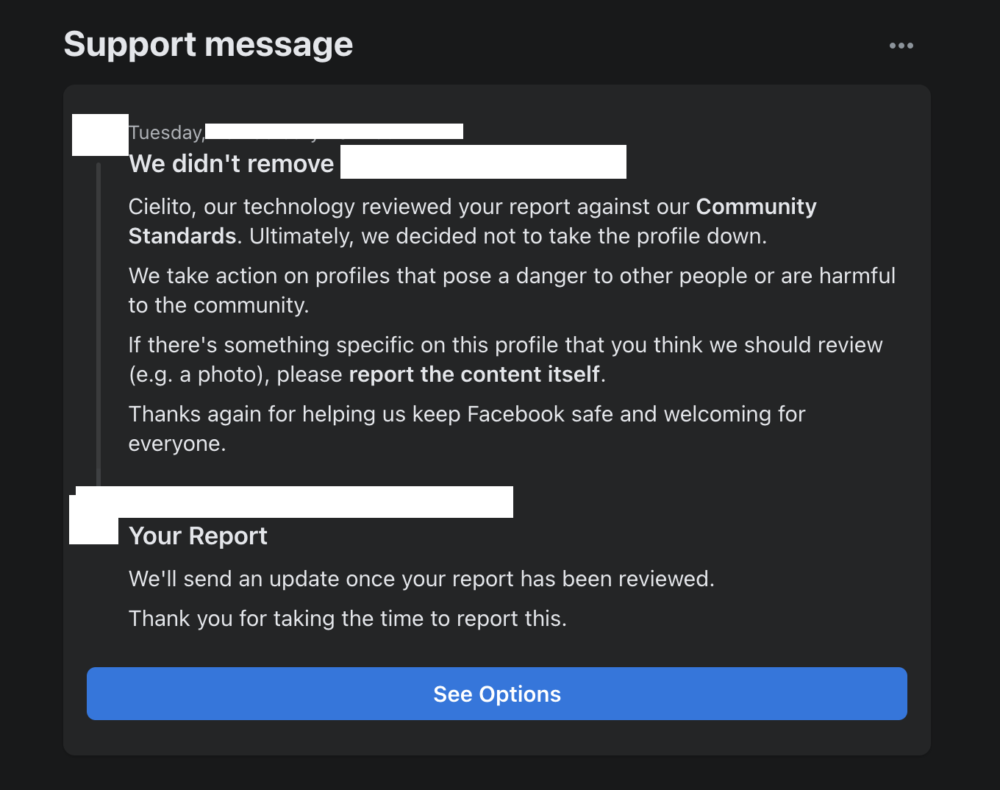
Image 2: Screenshot of a report for cyberbullying.
It takes time and money to stay connected and improve digital skills, especially for people who do not have much experience with ICT (information and communication technologies). The virtualization of activities has created opportunities for aggressors and criminals to take advantage of the large number of people who, since the pandemic, have begun their relationship with the Internet.
Thus, cases of online gender-based violence, together with phenomena of social exclusion such as the digital divide, call to question slogans such as “Internet: a world of possibilities” because they minimize the experiences of women and historically discriminated populations (minors, black, non-confirming genders, indigenous, elderly, etc.). Also, signs such as “Free WiFi” where personal data is being monitored and extracted for other, not entirely clear purposes.
A response to inequity in technologies is holistic digital security, which seeks to generate healthy digital habits. Although there are several measures to tackle and resist GBVO the protection measures tend to fall on civil society.
Digital security in civil society seeks to raise awareness about the political value of technology, promote the retaking of control over our privacy and create digital habits that protect us online and are adapted to each person’s needs and access conditions.
Healthy digital habits are a few actions carried out in a systematic way until they become a recurrent behaviour. For example: reviewing the security and privacy settings of the platforms we use, learning to recognize fake profiles and fraudulent offers, updating the operating system when requested, deleting photos and apps that are not used, turning off WiFi/Bluetooth, etc.
A hack that facilitates the process of personalizing security on digital platforms is to recognize the symbols that tech companies use in order to maximize space and facilitate access to options of their services. These symbols tend to be interpreted in a slightly different way depending on the platform used, some of them being:
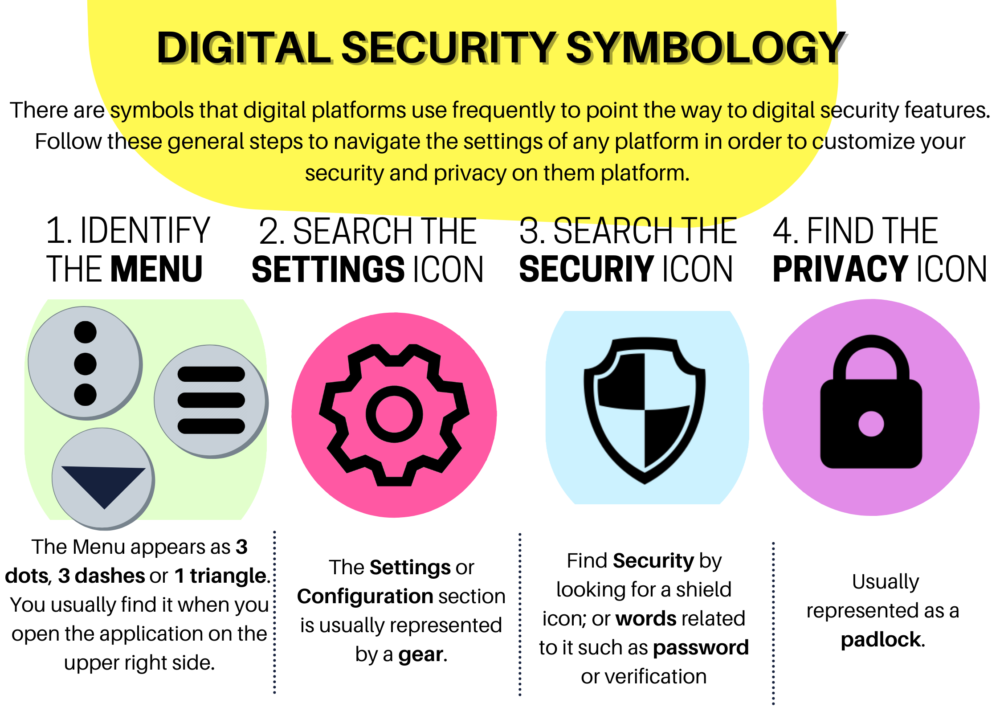
Image 3: Digital Security Symbology
Source: Cielito Saravia G.
This, among other digital security practices, show that the task of recognizing and reporting digital violence is in the hands of citizens, specifically the affected person. It’s up to each one to defend themselves against an attack; when the responsibility for addressing digital gender-based violence falls on the affected person, the imbalance of co-responsibility becomes visible. Aggressors, the State, and tech companies also have a role to play in this problem. However, aggressors are thriving in an environment of impunity that is perpetuated because the State does not recognize digital violence as a crime; and the responses of tech companies are poorly proportional (shown in image 2).
It is very common to receive this type of message that assures that the reported content or profile could not be removed because it does not violate a platform’s community standards. Thus, a cycle of violence is maintained.
Companies that create and maintain digital platforms could include security notions that take privacy and other digital rights into account from the first steps of their initiative. However, the solutions they propose are normally offered after a breach has been reported -when the damage has already been done and are more suitable for people who are familiar with the platforms (can navigate through their apps, and recognize symbols, in other words, digital natives). Therefore, the more time and practice that is dedicated to the use of devices and the Internet, the better the experience with ICTs to respond to an act of violence. However, this is complicated when schedules are shaped by other priorities – economic, familiar, educational, cultural, etc.- than staying continuously connected.
Another part of digital security is to encourage spaces of discussion among people who need support to improve access to information and strengthen communication processes. Something as simple as a social to share and build stronger ties can help identify systematic attacks and even reveal the attacker. These spaces provide a time to identify the desires and problems of a community and in the long run, to generate technologies based on their own needs and particular forms of organization. In this way, they do not depend on Internet access, its costs and the learning curve involved.
Digital violence must be addressed from a perspective of inequality. Therefore it’s understood that, laws will not be able to guarantee justice, algorithms will not provide social solutions or be able to improve our experience on platforms, and civil society cannot be left to address these problems alone.
+++++
Nosotras no somos el problema
La tecnología tiene un problema
We are not the problema
Technology has a problem
+++++
1 In Spanish: Report from 2021: https://sosdigital.internetbolivia.org/reporte-sos/ and the latest about the LGBTQAI+ population: https://sosdigital.internetbolivia.org/boletin-sos-orgullo-lgbtqi/
2 The first C-SIRT (Computer and Security Incident Response Team) in Bolivia with a gendered perspective: that analyses online threats of civil society -especially women and non-conforming gender diversities- and accompanies them in their resistance of said threats. This is done through a holistic perspective of online safety that includes: legal advice, psychological containment, and technical advisory.
3 Machitroll is a combined word using Spanish and English. Machista means sexist in English, and a troll is someone who leaves a message online to upset someone, cause trouble or annoy someone. The term was coined by Fundación Karisma to raise awareness about GBVO and to take community action to respond to their actions. https://lab.org.uk/alerta-machitroll-defending-women-on-the-internet/ Original website in Spanish: https://mtroll.karisma.org.co/
4 Video dates, sexting, or chat rooms are a feasible and safe alternative, as in-person dating should be postponed. https://www.ncbi.nlm.nih.gov/pmc/articles/PMC7408907/
5 Consent on sharing online content (picture, video, audio, etc.) of a person is normally comprised of consent before the content is taken; active, when a person agrees without coercion; informed, when the reason for capturing the content is clear and if it will be published.
6 Also known as digital poverty in Dundee, Scotland. Definition of the digital divide.
7 Amazon Kindle 2019: Is it Worth Buying? https://youtu.be/sxygkyskucA
+++++
Cielito Saravia is a Fellow of the Internet of Rights and a Chevening Scholar for 22-23 in Scotland. They are also a Co-Founder of the InternetBolivia.org Foundation, where they carried out workshops and personal assessments regarding online gendered violence (OGV). They formed the S.O.S Digital Center, a CSIRT with a gendered perspective, which is a Helpline to mitigate OGV; and coordinates actions with a multistakeholder group – with State entities, local and international NGO’s and civil society- against OGV. They are also an Activist for digital accountability.
NOTES:
16 Days is an international campaign to challenge violence against women and girls. The campaign runs every year from 25 November, the International Day for the Elimination of Violence against Women, to 10 December, Human Rights Day. This year’s theme is 16 Days of Activism. The Global 16 Days Campaign, launched by the Center for Women’s Global Leadership (CWGL) and feminists from around the world at the first Women’s Global Leadership Institute in 1991, has been used worldwide to call for the elimination of gender-based violence (GBV).
Services available to women in Dundee:
Violence Against Women Services for Vulnerable Women Booklet 2022
Gender-Based violence refers to harmful acts directed at an individual based on their gender. It is rooted in gender inequality, power abuse, and harmful norms.
Gender-based violence (GBV) is a serious violation of human rights and a life-threatening health and protection issue. It is estimated that one in three women will experience sexual or physical violence in their lifetime. During displacement and times of crisis, the threat of GBV significantly increases for women and girls.
